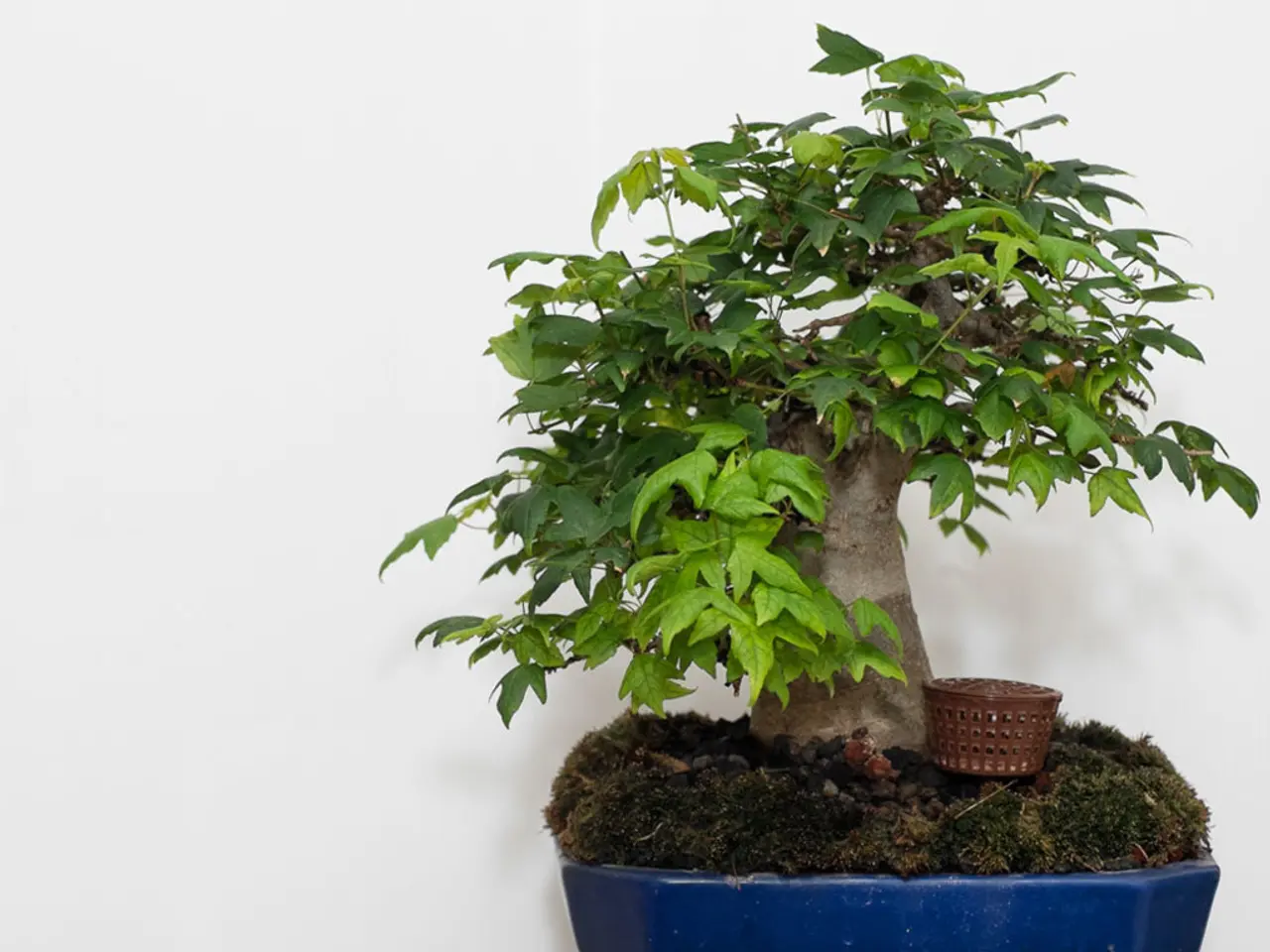Nurturing Bonsai Development in Greenhouses: Designing the Perfect Growth Conditions
In the world of bonsai cultivation, maintaining the ideal conditions is essential for healthy growth and propagation. Greenhouses provide an excellent solution for replicating the tropical and subtropical environments that many bonsai species call home.
Automated irrigation systems and ventilation methods, such as drip irrigation and roof vents, play a significant role in maintaining ideal watering and air circulation conditions. Drip irrigation delivers water directly to the roots, reducing evaporation and runoff, and minimizing waste. Strategically placed roof vents allow hot air to escape, creating a gentle circulation of air that promotes healthy growth. Mechanical ventilation systems provide a reliable and efficient means of air circulation, effortlessly exchanging stale air for fresh, oxygen-rich air.
The temperature in a bonsai greenhouse should ideally range between 60°F and 75°F (15°C to 24°C) during the day, with nights being slightly cooler. Some species like the ginseng ficus should be kept above 60°F to avoid frost damage. Maintaining a humid environment is beneficial for bonsai propagation. While some bonsai like ginseng ficus can tolerate lower humidity due to their leaf characteristics, they grow best with consistent humidity to prevent drying and stress. Propagation particularly requires higher humidity to encourage root development and reduce moisture loss.
Bonsai cuttings and seedlings need bright, indirect sunlight for about 6 to 8 hours daily. Direct harsh sunlight should be avoided as it can dry out young plants and cause leaf burn. A greenhouse allows filtered sunlight and shelter from drafts, ideal for delicate bonsai propagation. Incorporating shading materials or paints can reduce heat buildup, further enhancing natural air exchange and creating a more balanced environment for bonsai.
Greenhouse construction must incorporate effective temperature control systems, such as heating and cooling systems, insulation, and ventilation. Moisture sensors monitor soil moisture levels, alerting growers to potential issues before they become problematic. Opening side vents during cooler periods allows fresh air to enter, replenishing the greenhouse with oxygen-rich air.
In addition to maintaining the perfect environment, regular inspection of plants for signs of infestation or infection is essential to prevent the spread of pests or diseases. Maintaining a clean and tidy greenhouse environment ensures that all tools and equipment are regularly disinfected to prevent the spread of disease.
Implementing pest control and disease prevention measures, like isolation and integrated pest management, safeguards the health of bonsai trees. By creating a tailored ecosystem within the greenhouse, growers can fine-tune temperature, humidity, and light to meet the specific needs of each bonsai species, ensuring a thriving and vibrant bonsai garden.
In this tailored ecosystem, incorporating a home-and-garden setup such as a greenhouse not only replicates the ideal environments of various bonsai species but also supports their home-and-garden lifestyle through features like automated irrigation systems and gardening tools like roof vents, which promote optimal watering and air circulation conditions for enhanced growth. Regularly maintaining a clean and tidy greenhouse environment and implementing pest control measures contribute to a healthy home-and-garden lifestyle for bonsai, encapsulating the essence of gardening and both indoor and outdoor cultivation.




